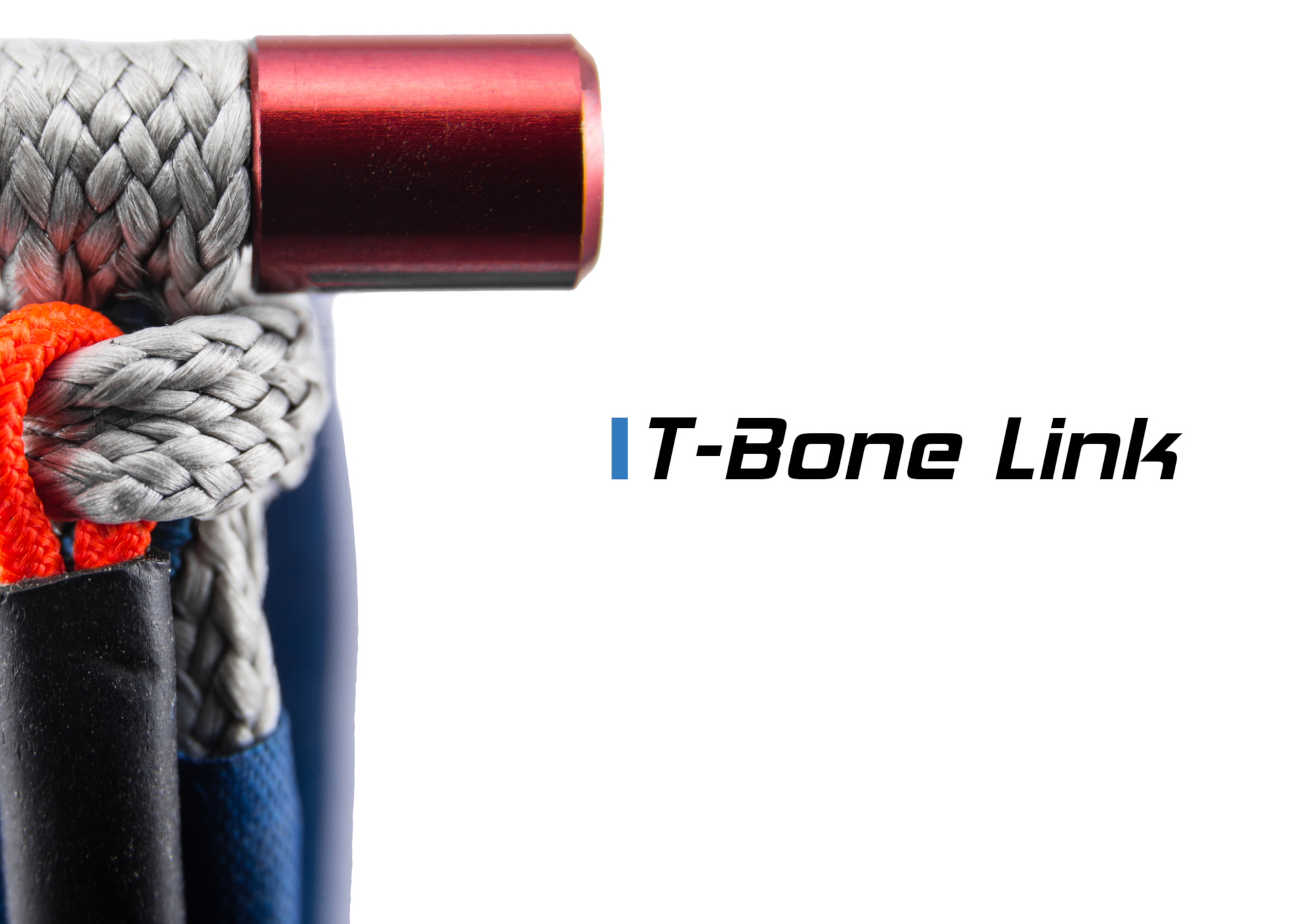
T-Bone link, for who for what?
The T-Bone links belong to the family of flexible connectors, just like Soft-Links.
This type of connection, widely used for many years in skydiving, is beginning to make its way in the paragliding world but still raises doubts and questions.
We will try to clarify some characteristics of flexible connectors, to give your more faith about their use.
Here we will try to reveal all the facets of these connectors ...
STRENGTH?
Despite their apparent fragility, certainly due to their extremely low weight, these connectors are often made from an ultra-resistant material: Dyneema (or its derivative). The failure tests carried out are similar to those of more traditional connectors such as automatic carabiners or quick links. This resistance can be obtained on some connectors by making several turns before closing it, or only 1 turn as on the T-Bone link.
In this case, the T-Bone links have a yield strength over 2400 daN (Equivalent to 2400 kg!). It should be noted that on a harness, the homologation tests (under different axes) impose a minimum strength of 1500daN (100kg with 15G acceleration), i.e. 750daN on each anchor point. The T-Bone links therefore have a nominal strength 3 times greater than that required on the harness-wing connection ...
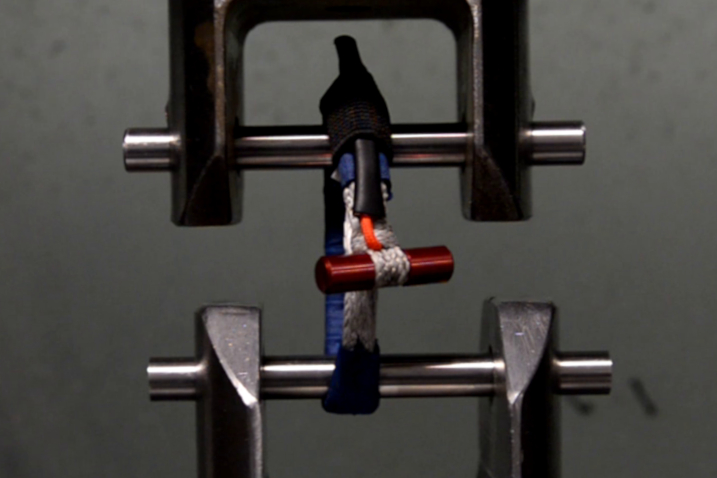
LOCKING?
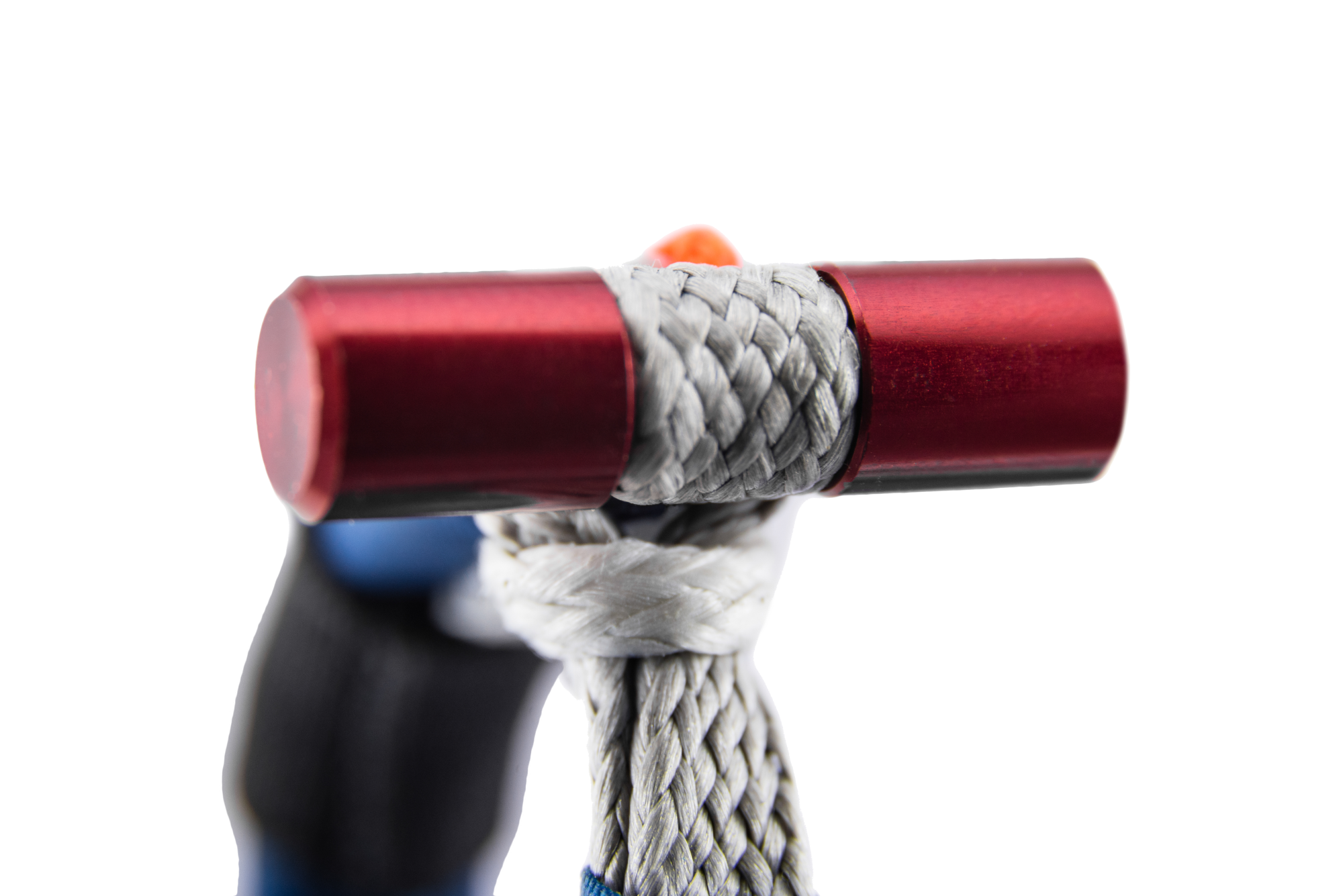
Closing a flexible connector requires a little training to be used safely, unlike an automatic carabiner that closes and locks itself. But this handling is far from being complex. On the T-Bone links, we have implemented the "Konnect" system, which makes it possible to close and lock in a single movement. The system is deliberately well adjusted, to eliminate any risk of untimely slippage of the closing loop.
Once locked, there is no chance that it will open unintentionally, due to shocks, vibrations, tension release, etc ...
This last property is really worthwhile for all the non-apparent connections, especially those on the reserve parachute (at shoulder level, or in the container). You can now skip this verification from your checklist.
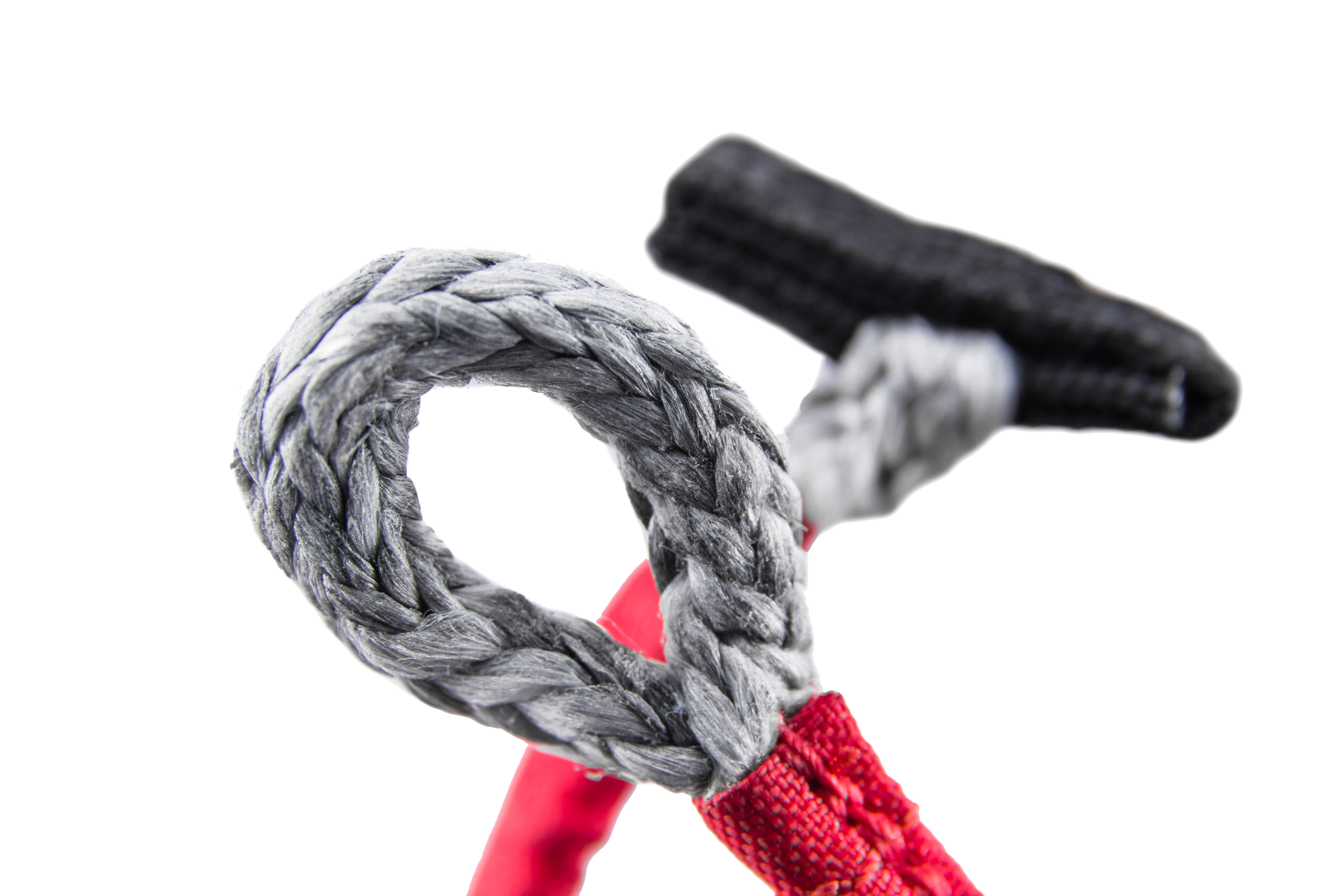
WEAR AND TEAR?
Its fragile appearance may give the impression that the flexible connector will not have a long service life. This is not the case. To date, the only real weakness of Dyneema is heat.
The T-Bone link (like the Soft-link) is equipped with a protective sheath (blue fabric) that limits small external aggressions. As long as this sheath is not damaged, the Dyneema is safe. For the uncovered parts (near the locking system), the fibres must be checked regularly for damage (cuttings). A small amount of "lint" does not necessarily mean premature wear.
If you observe traces of heating (black marks, burnt fibres) or cut fibres, it is better to discard the connector in question.
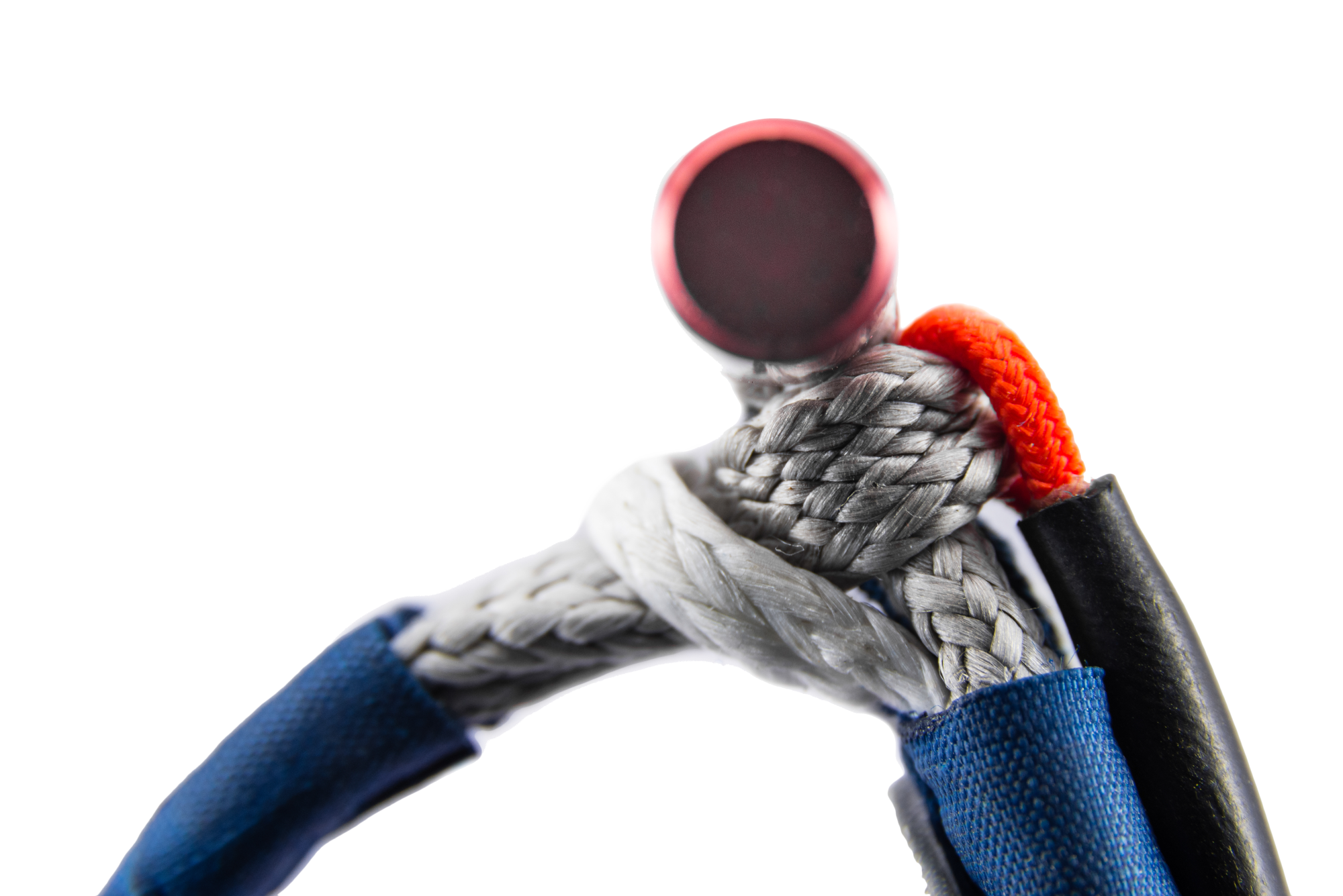
OR CAN WE USE THEM?
In general, flexible connectors can be used on any type of connection if certain precautions are taken:
Breaking strength?
Depending on the location where the connector is used, one must of course check that the breaking strength is consistent with the general recommendations. On the drawings below you will find the general recommendations corresponding to the approval tests. These values correspond to the minimum for a test of 100kg at 15G.
NOTE: If your harness is approved for 130kg, a multiplying factor of 1.3 must be applied.
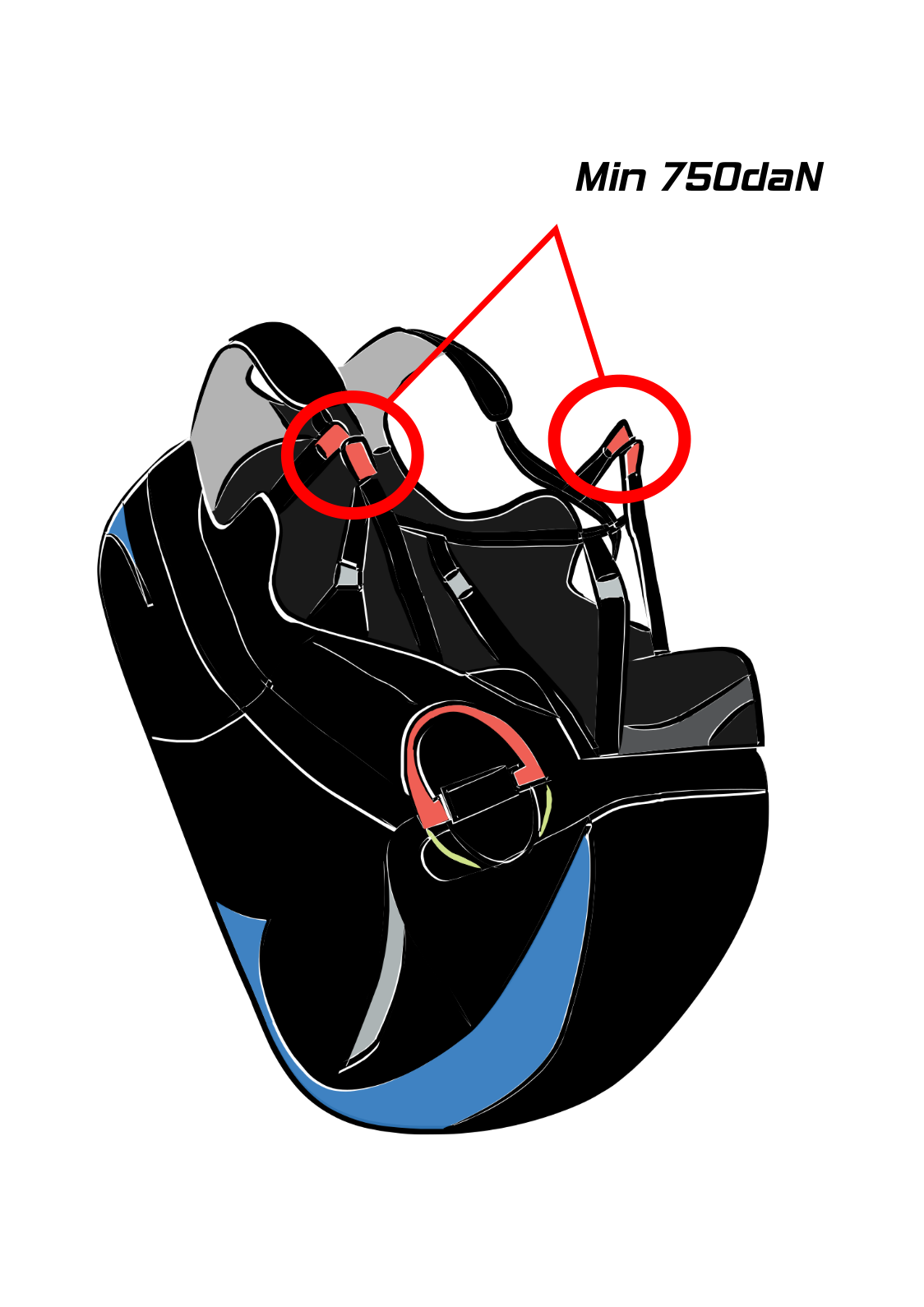
Connection harness/solo wing
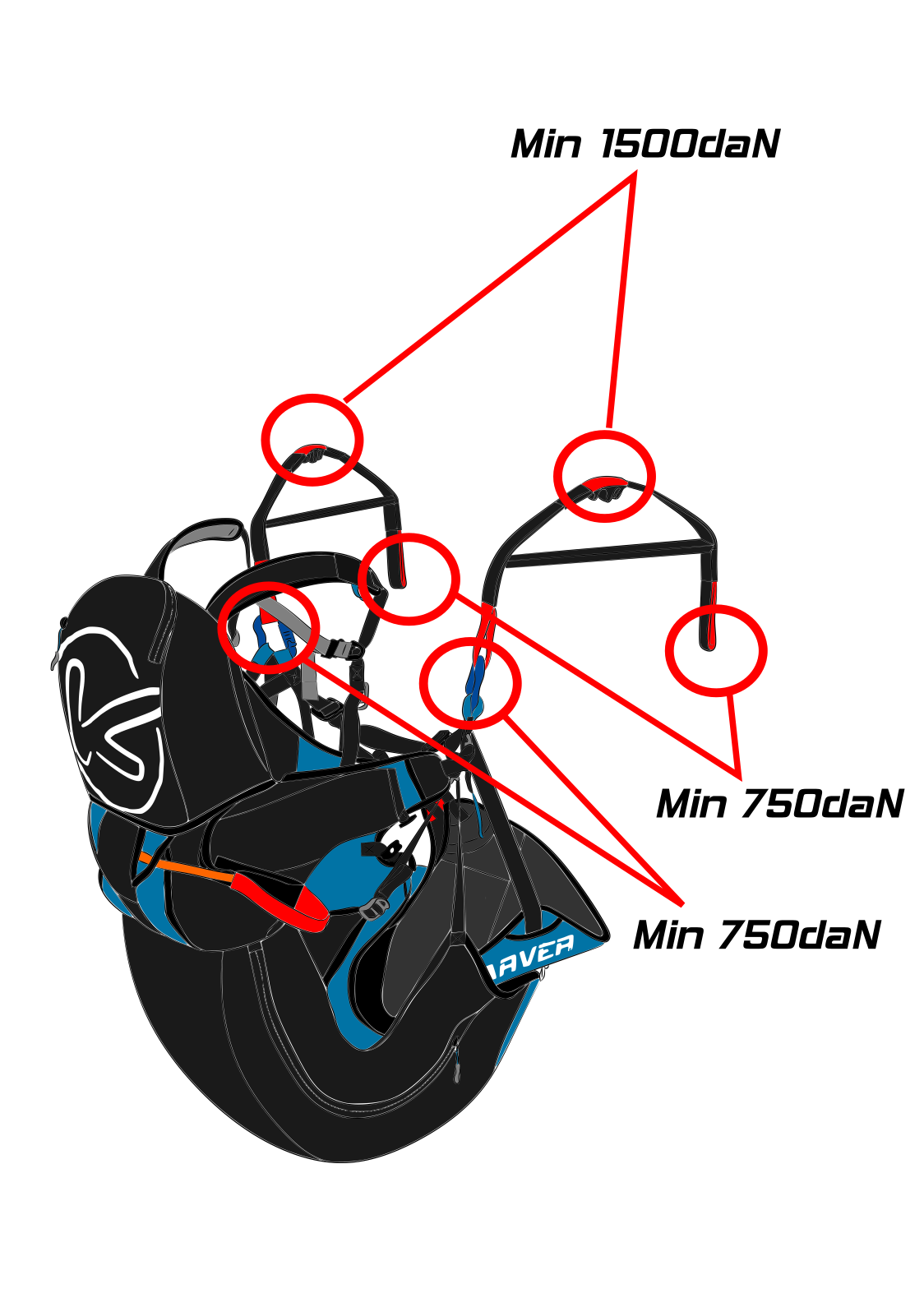
Connection harness/tandem wing
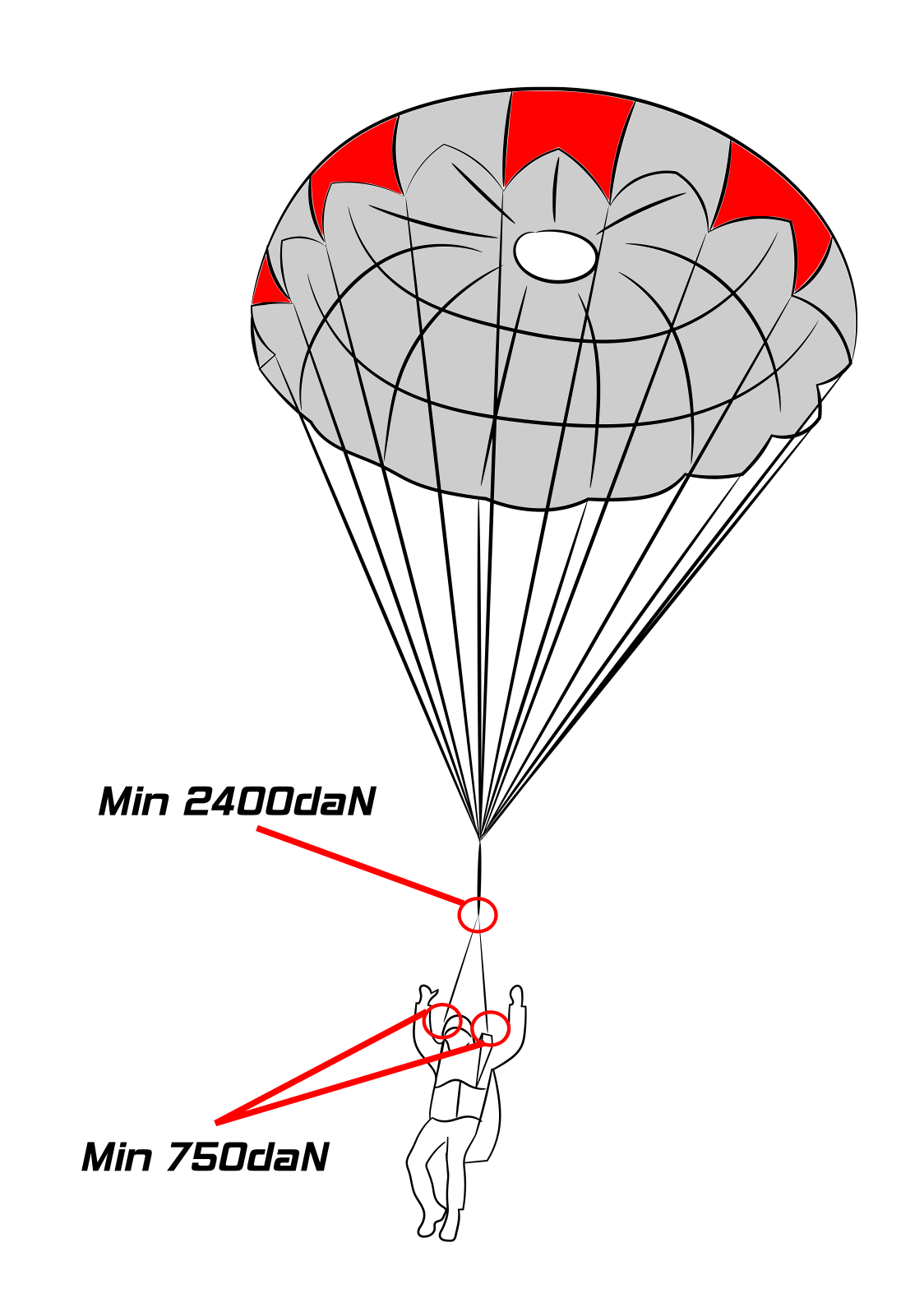
Connecting harness/solo rescue parachute
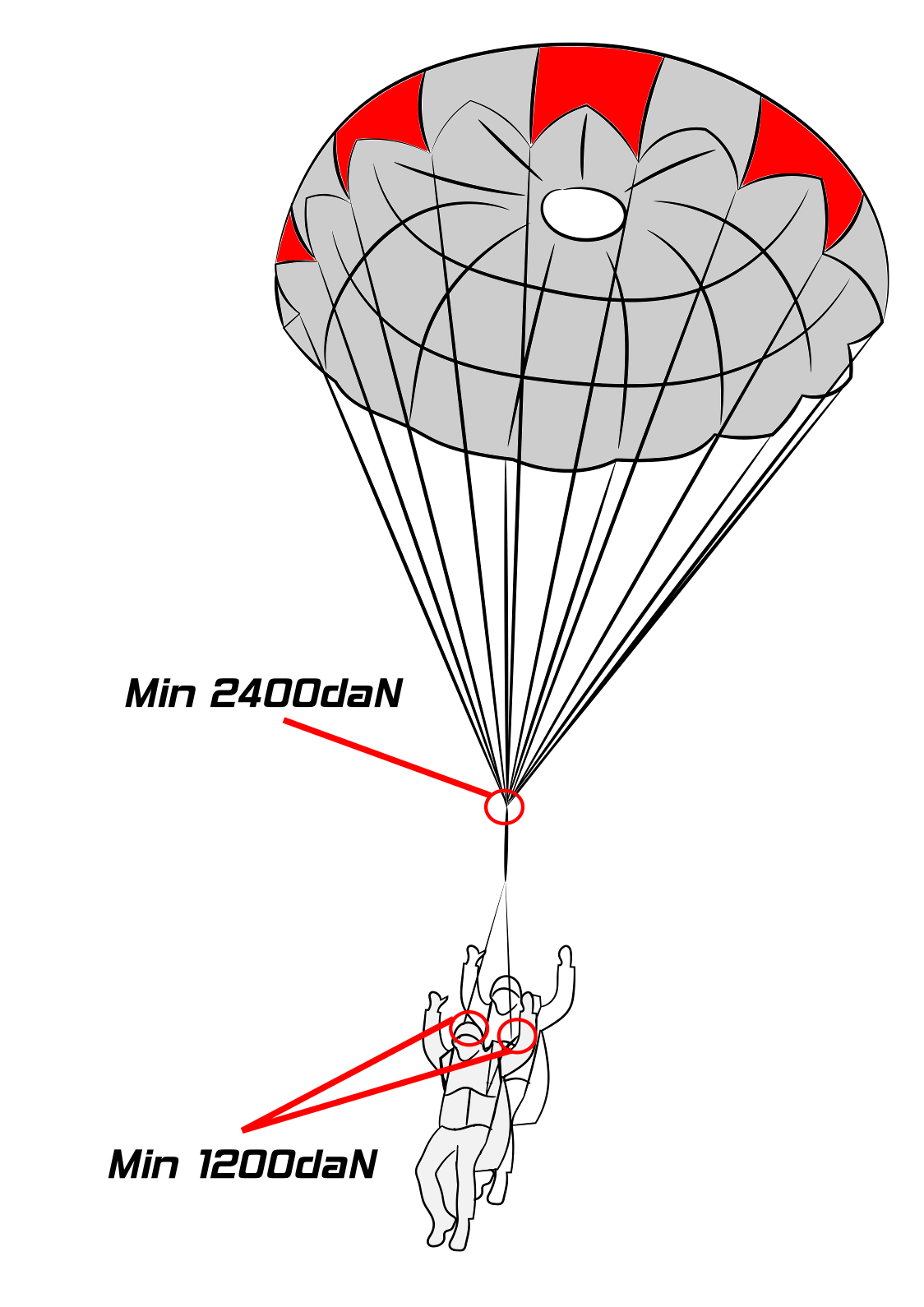
Connection spacer/tandem rescue parachute
You will notice some form of inconsistency on some connection points ...
The rescue risers are required to have a much higher breaking strength than a harness, as it was considered that they could be used for both solo and tandem flights.
The values given here are therefore a "minimum", taking into account the weakest link in the chain.
What kind of support?
As mentioned in the article "Reflection on connectorsAs we mentioned in the article, it is important for automatic carabiners to be mounted on a sling with a suitable width, so as not to risk getting crooked and having its strength greatly reduced.
The same applies to flexible connectors. Mounted in tension on a strap that is too wide, the connector will compress the support strap and potentially reduce its structural strength.
We therefore recommend the use of flexible connectors such as the T-Bone links on webbing less than 25mm wide to limit this webbing compression effect, or on very thin Dyneema halyard connection points such as on the Kruyer II or the Kruyer III.
The same goes for all types of connections, for the harness, the glider, the rescue risers, the rescue itself, etc....
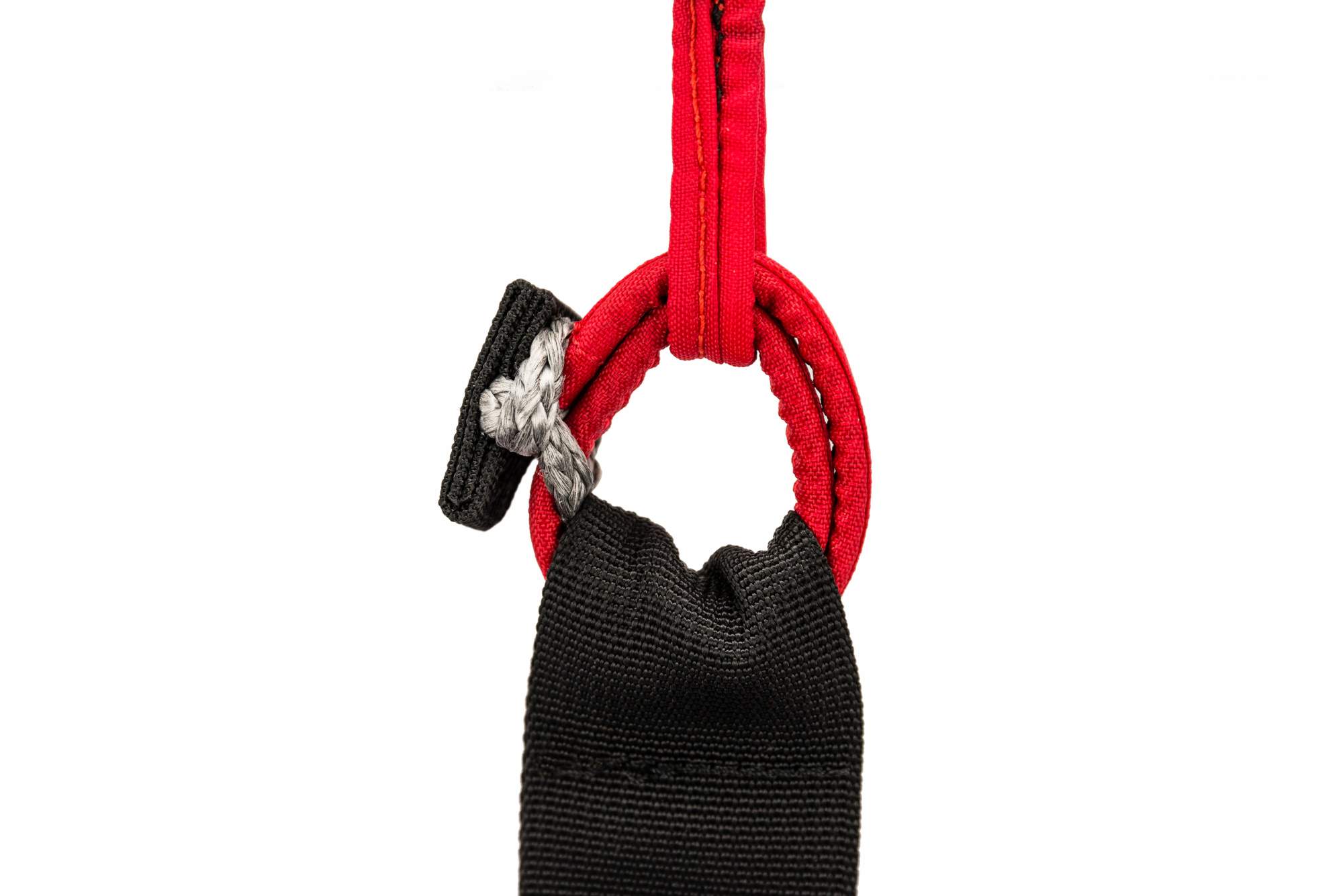
Example of Soft-link on a 40mm strap (black)
We therefore recommend the use of flexible connectors such as the T-Bone links on webbing less than 25mm wide to limit this webbing compression effect, or on very thin Dyneema halyard connection points such as on the Kruyer II or the Kruyer III.
The same goes for all types of connections, for the harness, the glider, the rescue risers, the rescue itself, etc....
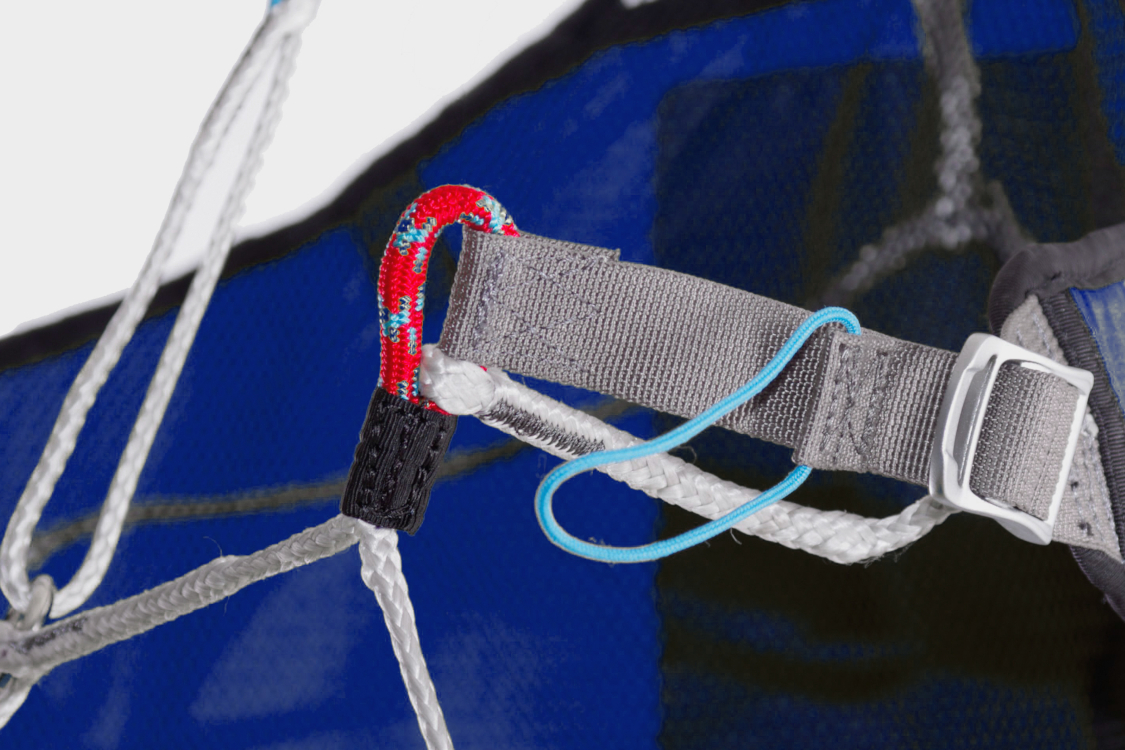
Anchor point of the Kruyer II
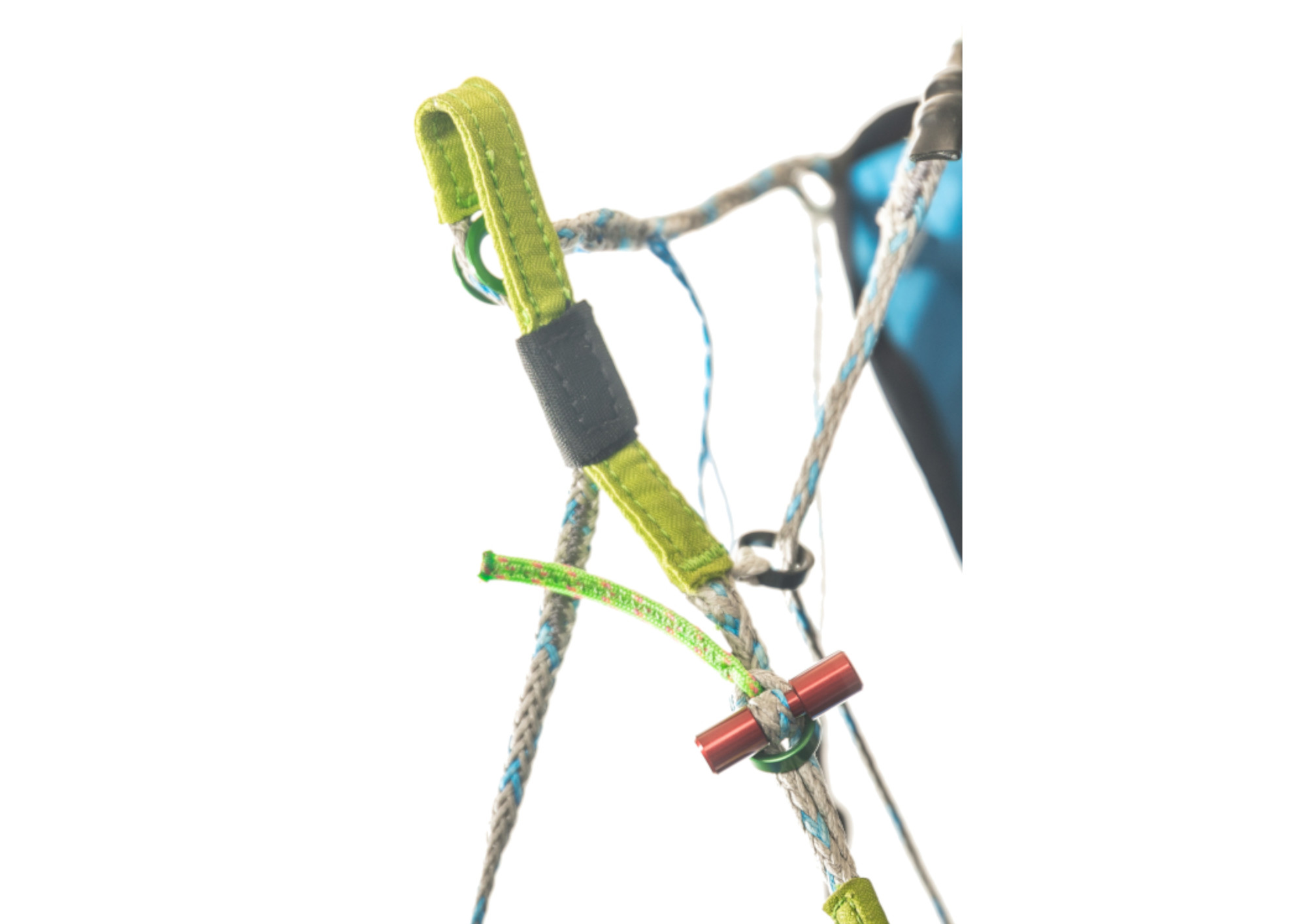
Anchor point of the Kruyer III
AND IN TANDEM ?
Well, as seen previously, the use of flexible connectors in tandem is perfectly reasonnable, as long as their breaking strength is sufficient, and the strap on which they are mounted does not exceed 25mm wide (according to our recommendations). It is therefore necessary to check the correlation between the anchorage point (minimum strength and strap width) and the planned flexible connector.
The T-Bone link has the advantage of having a breaking strength greater than 2400 daN, which allows it to be used for any type of connection, whether solo or tandem.
